1mg
Showing 6651–6700 of 7910 results
-
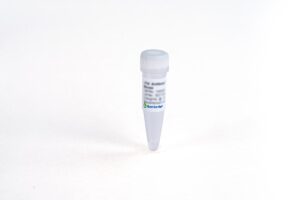
PSA (7H2), mAb, Mouse
$104.36 Add to cart View Product DetailsProstate specific antigen (PSA) is a serine protease produced by the prostate gland. In serum, it exists in different forms, cPSA, mainly including PSA-ACT (alpha-1-antichymotrypsin) and PSA-A2M (alpha-2-macroglobulin), fPSA (free PSA), etc. The blood level of PSA is increased in men with prostate cancer and it is considered as an indicator for prostate cancer, tumor recurrence and response to therapy.
-

PSA (8A12), mAb, Mouse
$104.36 Add to cart View Product DetailsProstate specific antigen (PSA) is a serine protease produced by the prostate gland. In serum, it exists in different forms, cPSA, mainly including PSA-ACT (alpha-1-antichymotrypsin) and PSA-A2M (alpha-2-macroglobulin), fPSA (free PSA), etc. The blood level of PSA is increased in men with prostate cancer and it is considered as an indicator for prostate cancer, tumor recurrence and response to therapy.
-

PSA Antibody (8A9B8), mAb, Mouse
$168.19 Add to cart View Product DetailsPSA monoclonal antibodies (5B10D4, 8A9B8, 1G9G8, 4A5D10 and 1A7D4) recognize total PSA, freePSA and ACT- PSA Complex (Prostate Specific Antigen / a-1 Antichymotrypsin Complex).
-

Pseudo Buprenorphine
$351.04 Add to cart View Product DetailsMolecular Formula : C58 H80 N2 O8
-

Pseudo Erythromycin A Enol Ether
$127.65 Add to cart View Product DetailsMolecular Formula : C37 H65 N O12
-
Pseudoerythromycin A Hemiketal
$224.25 Add to cart View Product DetailsMolecular Formula : C37 H67 N O13
-

Pseudohydromorphone
$225.98 Add to cart View Product DetailsMolecular Formula : C34 H36 N2 O6
-

Pseudomonic Acid D Sodium (>90%)
$784.88 Add to cart View Product DetailsMolecular Formula : C26 H41 O9 . Na
-
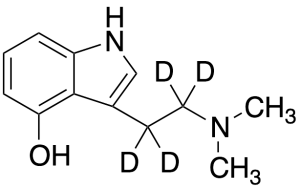
Psilocin-d4
$194.93 Add to cart View Product DetailsMolecular Formula : C12 D4 H12 N2 O
-

Psilocine-d10
$175.09 Add to cart View Product DetailsMolecular Formula : C12 2H10 H6 N2 O
-
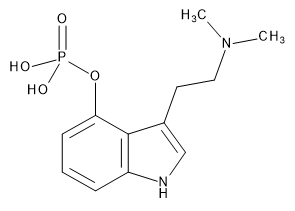
Psilocybin
$77.63 Add to cart View Product DetailsMolecular Formula : C12 H17 N2 O4 P
-
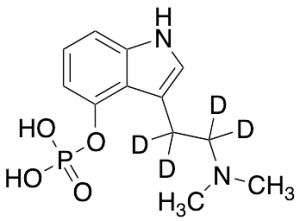
Psilocybin-d4
$370.88 Add to cart View Product DetailsMolecular Formula : C12 2H4 H13 N2 O4 P
-

PSMA Fc Chimera, Human
$1,725.00 Add to cart View Product DetailsProstate-specific membrane antigen (PSMA) also known as Folate hydrolase 1 (FOLH1), Folylpoly-gamma-glutamate carboxypeptidase (FGCP), Glutamate carboxypeptidase 2 (GCP2), N-acetylated-alpha-linked acidic dipeptidase I (NAALAD1), is a type II membrane glycoprotein that is expressed in prostate tissue and to a lesser extent in the peripheral and central nervous system, small intestinal, and salivary gland tissues. PSMA has both folate hydrolase and N-acetylated-alpha-linked-acidic dipeptidase (NAALADase) activity and has a preference for tri-alpha-glutamate peptides. The catalytic activity of PSMA involves the release of unsubstituted C-terminal glutamyl residues, typically from Ac-Asp-Glu or folylpoly-gamma-glutamates. PSMA is used as a diagnostic and prognostic indicator of prostate cancer, and as a possible marker for various neurological disorders such as schizophrenia, Alzheimer’s disease, and Huntington’s disease.
-

PSMA, His, Human
$1,552.50 Add to cart View Product DetailsProstate-specific membrane antigen (PSMA) also known as Folate hydrolase 1 (FOLH1), Folylpoly-gamma-glutamate carboxypeptidase (FGCP), Glutamate carboxypeptidase 2 (GCP2), N-acetylated-alpha-linked acidic dipeptidase I (NAALAD1), is a type II membrane glycoprotein that is expressed in prostate tissue and to a lesser extent in the peripheral and central nervous system, small intestinal, and salivary gland tissues. PSMA has both folate hydrolase and N-acetylated-alpha-linked-acidic dipeptidase (NAALADase) activity and has a preference for tri-alpha-glutamate peptides. The catalytic activity of PSMA involves the release of unsubstituted C-terminal glutamyl residues, typically from Ac-Asp-Glu or folylpoly-gamma-glutamates. PSMA is used as a diagnostic and prognostic indicator of prostate cancer, and as a possible marker for various neurological disorders such as schizophrenia, Alzheimer’s disease, and Huntington’s disease.
-

Pteroyltri-Gamma-L-glutamic acid (>85%)
$165.60 Add to cart View Product DetailsMolecular Formula : C29 H33 N9 O12
-
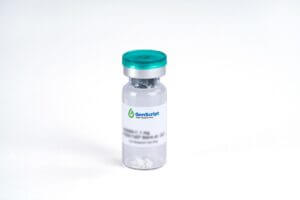
PTH (1-84aa), Human
$819.38 Add to cart View Product DetailsParathyroid Hormone (PTH) is the most important endocrine regulator of calcium and phosphorus con- centration in extracellular fluid. Parathyroid Hormone (PTH) is secreted from cells of the parathyroid glands and finds Parathyroid Hormone’s major target cells in bone and kidney. Like most other protein hormones, Parathyroid Hormone (PTH) is synthesized as a preprohormone. After intracellular processing, the mature hormone is packaged within the Golgi into secretory vesicles, the secreted into blood by exocytosis. Parathyroid Hormone (PTH) is secreted as a linear protein of 84 amino acids. Recombinant Human Parathyroid Hormone (PTH) produced in E. coli is a single, non-glycosylated, polypeptide chain containing 84 amino acids.
-

PTH (7-34aa), Human
$1,138.50 Add to cart View Product DetailsPolypeptide hormones secreted by the parathyroid glands, which promote release of calcium from bone to extracellular fluid by activating osteoblasts and inhibiting osteoclasts, indirectly promote increased intestinal absorption of calcium, and promote renal tubular reabsorption of calcium and increased renal excretion of phosphates. It is a major regulator of bone metabolism. Secretion of parathyroid hormone increases when the level of calcium in the extracellular fluid is low. Its action is opposed by calcitonin.
-

PTH (8H4HC)
$319.13 Add to cart View Product Detailsbeta test product of PTH Antibody (8H4HC)
-

PTH (NT7HC)
$319.13 Add to cart View Product Detailsbeta test product of PTH Antibody (NT7HC)
-

PTH Antibody (M18-3), mAb, Mouse
$319.13 Add to cart View Product DetailsParathyroid
hormone (PTH) is synthesized by the parathyroid glands and secreted into the
blood stream. Intact PTH is a single polypeptide containing 84 amino acids.
PTH, which plays an important role in maintaining calcium homeostasis, is a
useful biomarker in the diagnosis of calcium related disorders. -

PTH Antibody (NT7M), mAb, Mouse
$319.13 Add to cart View Product DetailsParathyroid
hormone (PTH) is synthesized by the parathyroid glands and secreted into the
blood stream. Intact PTH is a single polypeptide containing 84 amino acids.
PTH, which plays an important role in maintaining calcium homeostasis, is a
useful biomarker in the diagnosis of calcium related disorders. -

Pulcherriminic Acid
$654.64 Add to cart View Product DetailsMolecular Formula : C12 H20 N2 O4
-
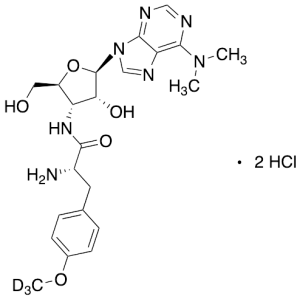
Puromycin-D3 Dihydrochloride
$124.20 Add to cart View Product DetailsMolecular Formula : C22H26D3N7O5 • 2(HCl)
-

PVR/CD155 Fc Chimera, Human
$1,035.00 Add to cart View Product DetailsPVR is a Type I transmembrane glycoprotein in the immunoglobulin superfamily. Commonly known as Poliovirus Receptor (PVR) due to its involvement in the cellular poliovirus infection in primates. PVR’s normal cellular function is in the establishment of intercellular adherens junctions between epithelial cells. PVR/CD155 was originally isolated based on its ability to mediate polio virus attachment to host cells. The full length (or PVR alpha isoform) is synthesized as a 417 amino acid (aa) precursor that contains a 20aa signal sequence, a 323aa extracellular region, a 24aa TM segment and a 50aa cytoplasmic tail. PVR binds other molecules including Vitronectin, Nectin-3, DNAM-1/CD226, CD96, and TIGIT but does not bind homotypically. PVR is up-regulated on endothelial cells by IFN-gamma and is highly expressed on immature thymocytes, lymph node dendritic cells, and tumor cells of epithelial and neuronal origin.
-

Pyochelin I and Pyochelin II
$248.40 Add to cart View Product DetailsMolecular Formula : C14H16N2O3S2
-
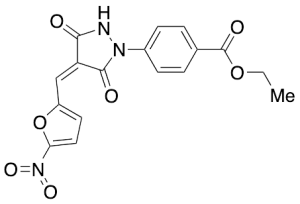
PYR-41
$50.03 Add to cart View Product DetailsMolecular Formula : C17 H13 N3 O7
-
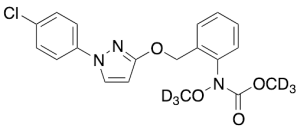
Pyraclostrobin-d6
$266.51 Add to cart View Product DetailsMolecular Formula : C19H12D6ClN3O4
-
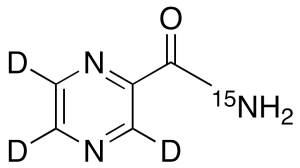
Pyrazinamide-15N,d3
$290.66 Add to cart View Product DetailsMolecular Formula : C5H2D3N215NO
-
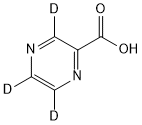
Pyrazinecarboxylic Acid-d3
$219.08 Add to cart View Product DetailsMolecular Formula : C5HD3N2O2
-

Pyrazole N-Demethyl Sildenafil
$130.24 Add to cart View Product DetailsMolecular Formula : C21H28N6O4S
-
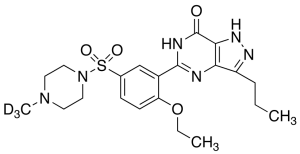
Pyrazole N-Demethyl Sildenafil-d3
$218.21 Add to cart View Product DetailsMolecular Formula : C21H25D3N6O4S
-

Pyrethrin 1
$213.04 Add to cart View Product DetailsMolecular Formula : C21 H28 O3
-

Pyridaben-d13
$350.18 Add to cart View Product DetailsMolecular Formula : C19 D13 H12 Cl N2 O S
-
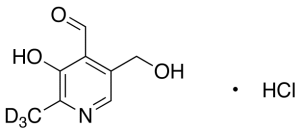
Pyridoxal-d3 Hydrochloride
$255.30 Add to cart View Product DetailsMolecular Formula : C8 D3 H6 N O3 . HCl
-

Pyridoxine-d2 Hydrochloride
$201.83 Add to cart View Product DetailsMolecular Formula : C8 2H2 H9 N O3 . Cl H
-
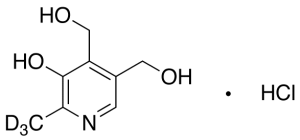
Pyridoxine-d3 Hydrochloride (contains ~1% d0)
$212.18 Add to cart View Product DetailsMolecular Formula : C8 2H3 H8 N O3 . Cl H
-
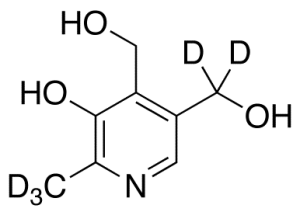
Pyridoxine-d5 (Major)
$329.48 Add to cart View Product DetailsMolecular Formula : C8H6D5NO3
-
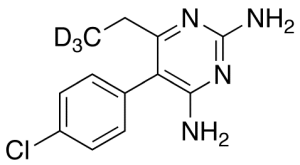
Pyrimethamine-d3
$184.58 Add to cart View Product DetailsMolecular Formula : C12H10D3ClN4
-
![Pyrimido[1,2-a]purin-10(1H)-one-13C3](https://advatechgroup.com/wp-content/uploads/sys-masterimagesh15hec10689413808158P997402-300x187.png)
Pyrimido[1,2-a]purin-10(1H)-one-13C3
$537.34 Add to cart View Product DetailsMolecular Formula : C513C3H5N5O
-
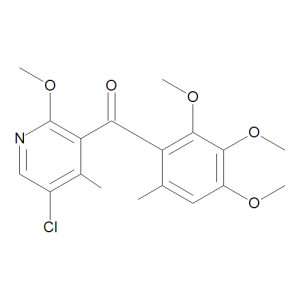
Pyriofenone
$214.76 Add to cart View Product DetailsMolecular Formula : C18H20ClNO5
-

Pyriproxyfen-D4
$223.39 Add to cart View Product DetailsMolecular Formula : C20H15D4NO3
-
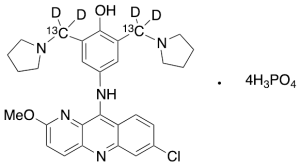
Pyronaridine-13C2 , d4 Tetraphosphate Salt
$224.25 Add to cart View Product DetailsMolecular Formula : C27¹³C2H28D4ClN5O2 • 4H 3PO4
-
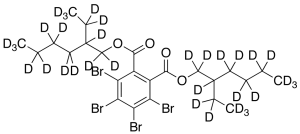
Pyronil 45-d34
$168.19 Add to cart View Product DetailsMolecular Formula : C24D34Br4O4
-

Pyrovalerone Hydrochloride
$60.38 Add to cart View Product DetailsMolecular Formula : C16 H23 N O . Cl H
-
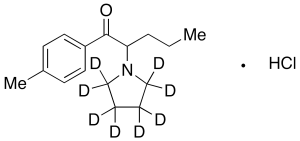
Pyrovalerone-d8 Hydrochloride
$168.19 Add to cart View Product DetailsMolecular Formula : C16H16D8ClNO
-
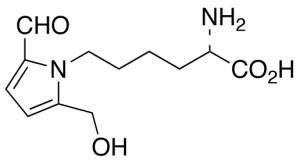
Pyrraline
$181.13 Add to cart View Product DetailsMolecular Formula : C12 H22 N2 O4
-

Pyruvaldehyde-13C3 (2% aqueous solution)
$224.25 Add to cart View Product DetailsMolecular Formula : 13C3H4O2
-

Pyruvic Acid-13C2
$163.01 Add to cart View Product DetailsMolecular Formula : C13C2H4O3
-

Pyruvic Acid-13C3 Sodium Salt
$88.84 Add to cart View Product DetailsMolecular Formula : 13C3H3NaO3
-
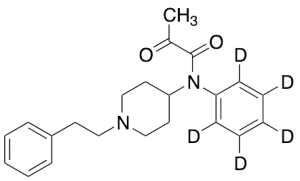
Pyruvyl Fentanyl-d5
$88.84 Add to cart View Product DetailsMolecular Formula : C22 H21 D5 N2 O2






